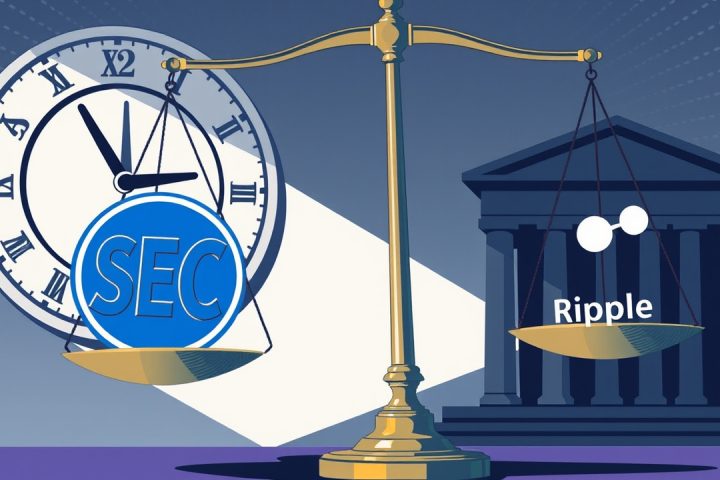Introduction
As institutional investors look to enter the cryptocurrency arena, regulatory compliance remains a significant barrier, akin to a gatekeeper standing between them and the decentralized finance (DeFi) landscape. While the vision of a fluid, borderless crypto economy through crosschain transactions has excited many, rising regulatory pressures across various jurisdictions have begun to reshape this ideal.
Regulatory Landscape
Recent regulations, such as Europe’s Markets in Crypto Assets (MiCA) and the Financial Action Task Force’s (FATF) Travel Rule, are establishing non-negotiable benchmarks that will ultimately determine which players flourish in this evolving market for global liquidity.
Challenges in Compliance
The growing popularity of cryptocurrencies has made regulatory compliance an increasingly critical factor, overshadowing technological advancements in determining which entities will gain traction. One glaring issue in crosschain environments concerns the lack of effective Anti-Money Laundering (AML) practices, particularly in the use of bridges—programs facilitating crypto transactions across different networks. Estimates indicate that over $21.8 billion in illicit funds have traversed these pathways, with conventional AML monitoring tools proving inadequate for tracing these flows as they transition between networks like Ethereum and Solana.
“The design of many decentralized bridges actively hinders the tracking of wallet histories, creating substantial challenges for authorities attempting to monitor questionable transactions.”
While centralized exchanges are currently under intense scrutiny to adopt crosschain surveillance protocols, decentralized bridges have become attractive routes for hackers and money launderers, frequently outpacing law enforcement’s response capabilities.
Inadequacies of Legacy Solutions
Unfortunately, legacy AML solutions are ill-suited for the decentralized landscape. Historically developed for exchanges with clear Know Your Customer (KYC) requirements, these compliance tools struggle to adapt to decentralized protocols that lack robust counterparty identification. Although innovations such as AI-driven analytics and smart contracts have emerged to identify suspicious activity in real-time, they still rely on centralized data collection frameworks that do not match the inherently open nature of decentralized systems.
Travel Rule Compliance
Crosschain transactions present additional complications in adhering to the Travel Rule, which mandates that service providers include detailed information about senders and recipients for transfers exceeding set thresholds. With decentralized exchanges and bridges routinely bypassing these requirements, compliance becomes increasingly complex.
Notably, while Europe’s MiCA regulations establish consistent standards for licensed crypto service providers, they fail to encompass unregulated platforms, which could lead to discrepancies in transaction monitoring.
Regulatory Actions and Future Directions
In the U.S., the stringency of existing regulations was recently highlighted by substantial fines levied against digital banks by the Office of Foreign Assets Control (OFAC) for AML violations, underscoring a willingness to enforce compliance rigorously. The UK is also expanding its AML oversight mechanisms, further complicating the landscape for decentralized finance operations.
To advance regulated DeFi integration within mainstream finance, the introduction of AML-compliant bridges is critical. A select few initiatives are already working to incorporate compliance measures across various jurisdictions. However, significant challenges remain, particularly the ongoing quest for AML tools that do not undermine the principles of decentralization.
Conclusion
Nevertheless, there is potential for innovation, as some firms are already experimenting with crosschain settlements that harmonize privacy and compliance measures. But broad institutional adoption will likely be stymied until decentralized protocols incorporate services that align with regulatory demands.
The urgency for decentralized protocols to actively pursue self-regulation and compliance solutions is growing as the possibility of being mandated into closed systems by regulators looms. While some advocates argue that stringent compliance measures threaten the ethos of permissionless innovation, the growing reality is that crosschain compliance is emerging as essential for achieving global scalability and fostering sustainable partnerships.
Ignoring these regulatory requirements not only introduces risks but also positions failure for those unwilling to adapt—both commercially and ethically. Compliance must evolve from being seen as a mere checkbox to a foundational design principle, crucial for the maturation of DeFi and facilitating the integration of institutional capital mainstream.
This article is for informational purposes only and should not be construed as legal, financial, or investment advice. The views expressed herein represent solely the perspective of the author and do not necessarily align with any official positions of Cointelegraph.




